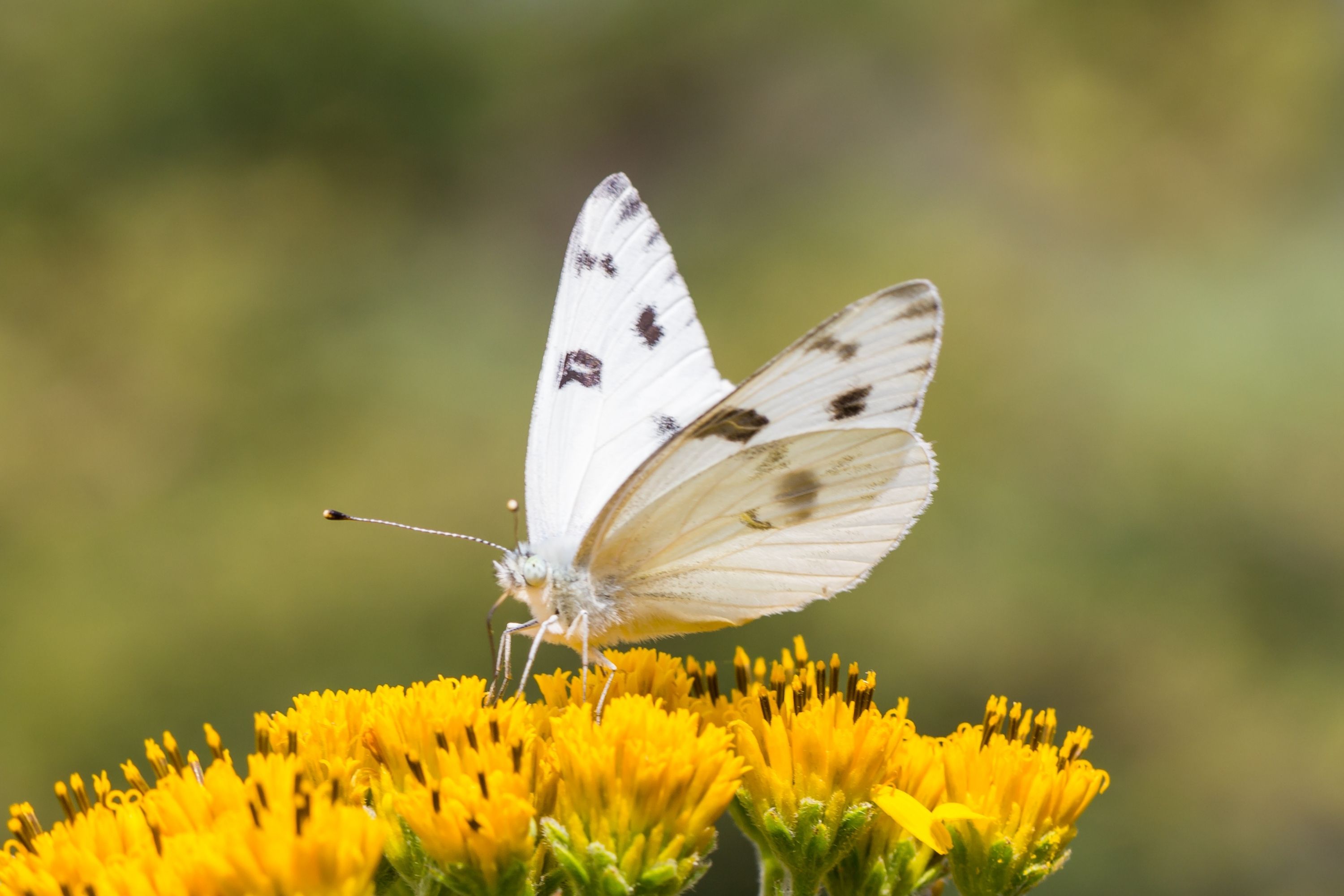Checkered white
(Pontia protodice)

Description
Pontia protodice, the checkered white or southern cabbage butterfly, is a common North American butterfly in the family Pieridae. Its green larva is a type of cabbage worm. The upperside of the wings are white and marked with black and gray, more so on the female than on the male. The underside of the hindwings is marked with extensive yellow-brown veins. The wingspan is 1.25–1.75 inches (3.2–4.4 cm). In its pre-adult form, the egg is orange, and mature larvae are black dotted and bluish green to gray with a yellow dorsal, lateral and sublateral stripe. The pupa overwinters, and varies in color from blue gray to cream. Pontia protodice is most commonly found in the southern parts on the United States along with some of the northern areas of Mexico. Occasionally the species can be found in the northern parts of the U.S. and southern Canada. It is absent from the Pacific Northwest and the New England area, although populations have become increasingly erratic just east of the Appalachians. P. protodice are most widespread in late summer and autumn, not earlier in the season. Habitats are open areas, including desert, plains, and disturbed areas. Virtually any disturbed dry open area such as vacant lots, railroads, airports, dry grassland, deserts and cities are potential areas of inhabitation. In addition, populations may sometimes be found in sparsely wooded areas, grasslands, and meadows in the prairie and parkland regions, usually in areas without heavy shade. Though it may seem these species of butterfly inhabit a wide range of environments, they have been found to be absent from certain counties for many years at a time. Checkered whites have been seen nectaring on mustards, composites, and alfalfa. In order to increase their reproductive fitness, male P. protodice must select a female who will put his investment to good use. One trait that males select for is bigger size and longer forewing length. It is unknown whether larger females are preferred by males or whether larger females can simply be seen at greater distances than their smaller conspecifics. Males also tend to prefer younger females with whom they copulate for longer periods of time. The dorsal wing surface of females are partially ultraviolet reflective, especially in older females who have melanic markings.
Taxonomic tree:







